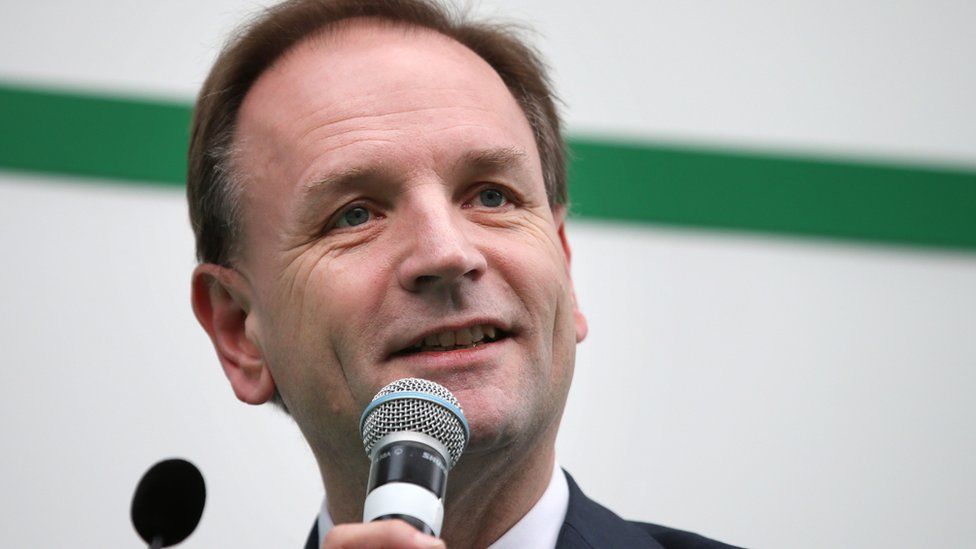The curious tale of £22bn NHS efficiency savings
- Published

The question of how much extra money NHS England needs to meet rising patient demand has dominated recent political argument over the health service.
And that is largely down to the chief executive, Simon Stevens.
His five-year forward view in October 2014 set out some big numbers, which were widely seen as realistic and then in turn adopted by the Conservatives and Liberal Democrats in the general election campaign.
But are those numbers quite what they seem?
One former minister in the coalition government now claims the financial projections were amended after intervention by Downing Street.
David Laws, the Lib Dem MP who lost his seat in the 2015 general election, said Mr Stevens was "leant on" to reduce the amount of money he would call on the government to chip in.
The plan set out by Mr Stevens and senior NHS colleagues predicted a £30bn gap in 2020 between expected demand and what the NHS could deliver.
He said £22bn could come from efficiency savings, leaving £8bn above inflation needed from the government.
'You must be kidding'
Mr Stevens acknowledged the target for efficiency savings was very ambitious but argued that it was achievable.
But David Laws said Mr Stevens had originally argued that a maximum of £15bn of efficiency savings could be delivered, with £15bn more needed from government.
Mr Laws told the BBC's Andrew Marr Show on Sunday: "The problem seems to be that when he then took that figure to the Conservatives in Number 10 they said: 'You must be kidding. There is no way the chancellor and the prime minister will sign up to that figure, you better get that figure down if you want it to be taken seriously, you better increase the efficiency savings'."
The request went in for £8bn of extra money in the end.
NHS England has in turn argued that in the autumn of 2014 a range of financial projections were discussed based on different scenarios.
A spokeswoman said: "We stand by the analysis and were not leant on.
"David Laws was not part of the discussions. Simon Stevens has been more publicly outspoken in arguing the NHS's corner than any previous serving NHS chief executive."
Senior NHS sources don't deny there were negotiations, but they reject the idea that Mr Stevens had his arm twisted by Downing Street.
They argue that the purpose of the five-year forward view planning was to model different assumptions about the level of productivity gains that could be delivered.
Sensitive time
Mr Laws' intervention comes at a sensitive time in the debate over NHS funding in England.
Some authoritative voices across the service are questioning where the £22bn of savings will come from and calling for more government funding than has been pledged so far.
The idea that the £22bn might have been seen at an early stage as too ambitious will no doubt fuel this discussion.
Mr Laws has set out his version of events in his new book Coalition.
He said the NHS "almost completely collapsed over Christmas" in 2014 and "came very close to preventable deaths in unsafe hospitals".
Money for the NHS, he said, dominated political debate between the coalition partners at that time.
Mr Laws, as a Lib Dem, has a political motive for accusing the Conservatives of not coming up with the funding the NHS needed.
As with all ministerial memoirs, there is an incentive to push out headline grabbing extracts before publication, but he has certainly enlivened the funding debate.